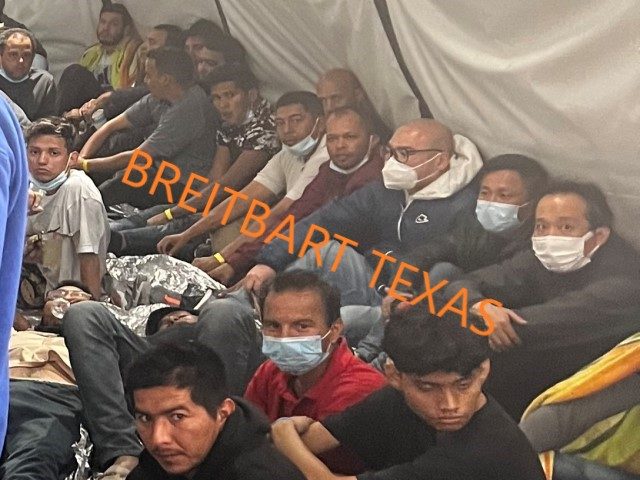A source within the Department of Homeland Security warns that nearly every federally-operated migrant detention facility faces overcrowding issues. More than 14,000 are currently detained, yet less than 5,000 are fully processed into DHS accounting systems.
The source, speaking on the condition of anonymity, explains that more than 6,600 migrants were apprehended on Monday alone. The figure does not include what the source calls “ghost aliens,” which are unprocessed migrants kept in outdoor settings.
The source says the situation is untenable but believes there will be no relief for the agents — most of whom are removed from routine field patrols. They explained that it is common to see one agent guarding a soft-sided cell with more than 400 migrants – an unacceptable ratio in any conventional state or federal prison.
In most cases, the source says migrants are packed so tightly that they cannot stretch legs or find room to sleep. Migrants are often housed in outdoor spaces designed for recreation.
The source says there are no inspections or enforced capacity limits. One such facility designed to temporarily house 500 is at quadruple capacity and nearly 1,600 of the 2,000 migrants are Cubans.
On Tuesday, more than 300 migrants were kept outside and along the Rio Grande riverbank in Del Rio, Texas. Roughly 150 of those were being held in a temporary shelter. In September 2021, a population that climbed to more than 15,000 mostly Haitian migrants were detained in the same area under an international bridge.
The source notes that most of the detentions contributing to the overcrowding are in only in three sectors: Rio Grande Valley (3,300 migrants); Yuma (2,900); and, Del Rio (2,600).
The source says that although the Border Patrol is overwhelmed, they can only apply the CDC Title 42 Covid-19 emergency expulsion order to a small percentage of migrants. That authority is also expected to end soon.
Most migrants currently being held, according to the source, are single adult Cubans and Nicaraguans who cannot be quickly removed under the CDC order. This demographic is also not largely subjected to the “Remain in Mexico” program that was reinstated by a federal judge.
The source says the agency is actively pursuing more expeditious methods to release the migrants into the United States as few pathways for removal exist under the Biden Administration’s executive actions.
Randy Clark is a 32-year veteran of the United States Border Patrol. Prior to his retirement, he served as the Division Chief for Law Enforcement Operations, directing operations for nine Border Patrol Stations within the Del Rio, Texas, Sector. Follow him on Twitter @RandyClarkBBTX.


COMMENTS
Please let us know if you're having issues with commenting.